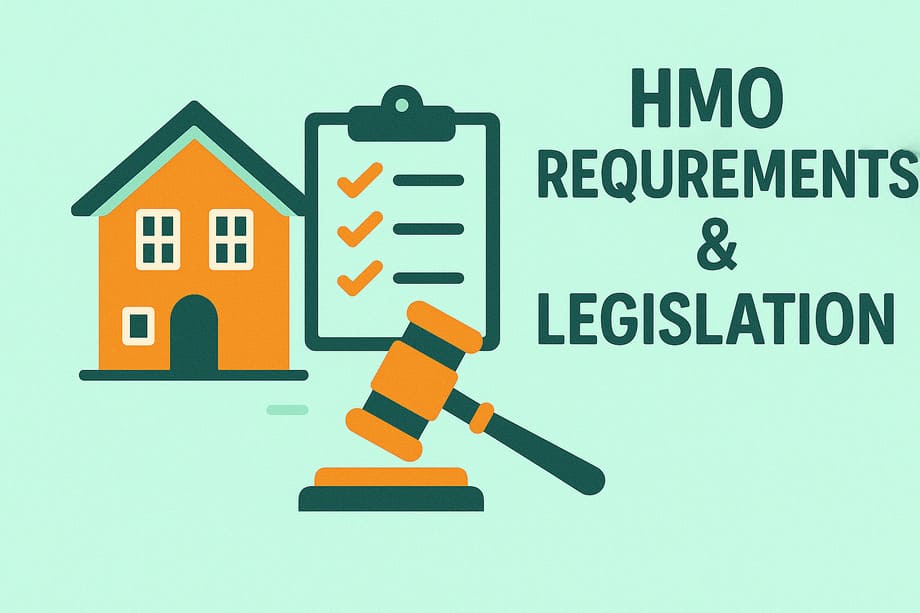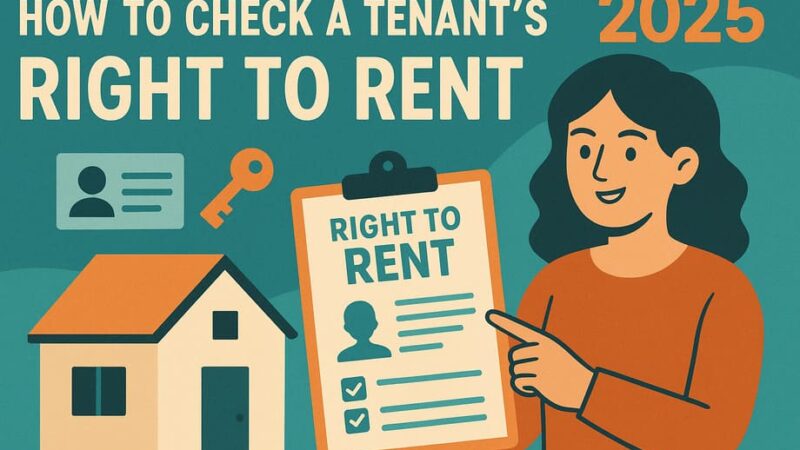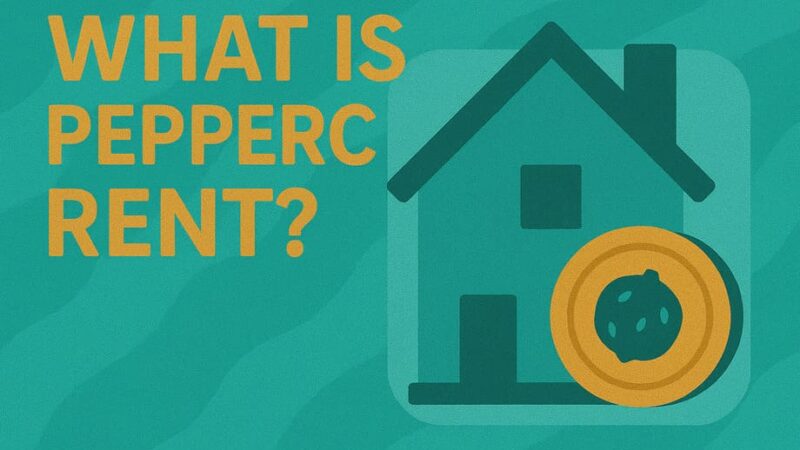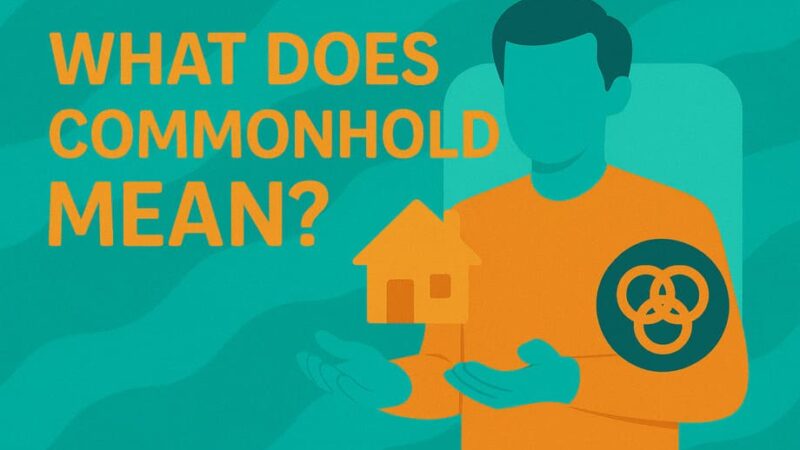HMO Regulations, Requirements & Legislation – Comprehensive Guide

What is an HMO?
A House in Multiple Occupation (HMO) is legally defined under the Housing Act 2004 as a residential property that satisfies particular criteria regarding occupancy and use. The definition encompasses properties that are occupied by three or more people who form more than one household, where these occupants share facilities such as kitchen, bathroom, or toilet areas, and where the accommodation serves as the primary residence for those living there while rent is paid or other consideration is made for the occupancy.
Understanding what constitutes an HMO is crucial for property owners, as this classification triggers numerous legal obligations and regulatory requirements. The legislation was designed to ensure proper standards are maintained in properties where multiple unrelated individuals share living spaces, recognizing that such arrangements require additional oversight to protect tenant welfare and safety.
Common HMO Types
The most prevalent forms of HMOs include traditional shared houses where individuals occupy separate bedrooms while sharing communal facilities, converted bedsits that have been subdivided from larger properties with shared amenities, and apartment buildings where flats are let to multiple unrelated tenants. Other common configurations involve buildings containing a mixture of individual rooms and self-contained flats, properties where the owner-occupier lives alongside two or more lodgers, and specialized accommodation such as hostels and supported housing facilities.
Each of these property types presents unique challenges and opportunities for landlords, with different regulatory requirements depending on the specific configuration and number of occupants. The key factor determining HMO status is not the physical layout of the property, but rather how it is occupied and whether the occupants share essential facilities while forming separate households.
Types of HMO Classification
Use Class Categories
The planning system categorizes HMOs according to their size and use patterns, with each classification carrying different planning and regulatory implications. Understanding these categories is essential for landlords to ensure compliance with both planning law and housing regulations.
C3 Use Class encompasses dwelling houses designed for occupation by single persons, families, or groups of up to six residents who live together as a single household. This classification covers properties that serve as the sole or primary residence for occupants who share domestic arrangements and responsibilities. Properties falling within C3 use class typically require less stringent planning oversight, as they align with traditional residential use patterns.
C4 Use Class specifically addresses properties housing between three and six unrelated individuals who share communal facilities while maintaining separate household arrangements. This classification recognizes the distinct nature of shared housing where occupants use the property as their sole primary residence but do not form a single household unit. The C4 classification was introduced to provide clearer planning guidance for smaller HMOs that have become increasingly common in urban areas.
Sui Generis Use Class represents a unique category for large HMOs accommodating seven or more occupants, properties that fall outside standard planning use classifications due to their scale and potential impact on local areas. These properties require specific planning permission due to their size and the particular considerations they raise regarding parking, waste management, and neighborhood character. The Sui Generis classification ensures that larger HMO developments receive appropriate scrutiny through the planning process.
Size Classifications
HMO properties are further categorized based on the number of occupants they accommodate, with each size category subject to different regulatory requirements and licensing obligations.
Small HMOs typically house between three and six unrelated residents and may be subject to additional licensing requirements depending on local authority policies and designated licensing areas. While these properties may fall under permitted development rights in some areas, many local authorities have implemented additional licensing schemes to ensure proper management and safety standards.
Large HMOs accommodate five or more people from two or more households and are subject to mandatory licensing requirements under national legislation. Properties housing seven or more residents automatically fall under Sui Generis planning classification, requiring specific planning permission and additional regulatory oversight due to their scale and potential community impact.
HMO Licensing Requirements
Mandatory Licensing
The mandatory licensing system for HMOs was established to ensure that larger shared properties meet appropriate safety and management standards. This system applies when a property houses five or more people from two or more households who share facilities such as toilets, bathrooms, or kitchen areas, and where at least one tenant pays rent for their accommodation.
The mandatory licensing regime was introduced under the Housing Act 2004 and significantly expanded in October 2018 to include properties that were previously exempt from licensing requirements. Each license remains valid for five years, after which landlords must apply for renewal to continue operating legally. The penalties for operating without the required license are substantial, with maximum fines of £20,000 possible, and importantly, each property requires its own separate license even if owned by the same landlord.
This licensing system serves multiple purposes: ensuring properties meet minimum safety standards, providing local authorities with oversight of HMO management practices, and giving tenants recourse when standards fall below acceptable levels. The licensing process involves detailed scrutiny of both the property and the proposed management arrangements, ensuring that only suitable persons operate HMO businesses.
Additional Licensing
Beyond the mandatory licensing requirements, local authorities have discretionary powers to implement additional licensing schemes covering HMOs with three to four unrelated residents. These schemes are typically introduced to address specific local housing issues, such as poor management practices, safety concerns, or neighborhood problems associated with particular types of shared accommodation.
Additional licensing allows councils to extend regulatory oversight to smaller HMOs that might otherwise escape formal monitoring, ensuring consistent standards across all forms of multiple occupation. These schemes often cover specific geographic areas where problems have been identified, or particular types of property that present heightened risks to occupant safety or community wellbeing.
Selective Licensing
Selective licensing represents another tool available to local authorities, which can apply regardless of whether properties qualify as HMOs. These schemes cover all rented properties within designated geographic areas and are typically introduced to address broader issues such as poor housing conditions, high levels of deprivation, or significant problems with property management standards.
While selective licensing operates independently of HMO status, properties subject to both HMO licensing and selective licensing must comply with the requirements of both schemes. This dual oversight ensures comprehensive regulatory coverage in areas where housing problems are particularly acute.
Application Process
Obtaining an HMO license requires submission of comprehensive documentation demonstrating that both the property and the proposed management arrangements meet regulatory standards. Essential documentation includes current gas safety certificates, electrical safety certificates (EICR), detailed property plans showing room layouts and dimensions, PAT testing certificates for portable appliances, comprehensive fire risk assessments, sample tenancy agreements, and proof of planning permission where required.
The application process typically takes between two and four weeks, though complex cases may require longer processing times. License fees vary significantly between local authorities and depend on property size and complexity, generally ranging from £400 to £2,000. Licenses must be renewed before expiry, with five-year terms being standard across most licensing schemes.
Management Regulations & Standards
The Management of Houses in Multiple Occupation Regulations 2006
The management regulations establish comprehensive standards that landlords must meet when operating HMO properties, covering everything from basic maintenance responsibilities to detailed record-keeping requirements. These regulations recognize that HMO properties require more intensive management than single-household lettings due to the complexity of managing multiple tenants and shared facilities.
Landlord duties under these regulations include providing current contact details to all tenants, maintaining the property in good repair and proper decoration, ensuring adequate natural light and ventilation throughout the property, and providing sufficient water supply to meet the needs of all occupants. Additionally, landlords must maintain common areas and facilities to appropriate standards, ensure proper waste disposal arrangements are in place, and keep detailed written records of all safety checks and maintenance activities.
The regulations also establish specific requirements for property amenities and facilities. Annual gas safety inspections are mandatory where gas appliances are present, while electrical safety inspections (EICR) must be conducted every five years by qualified electricians. Regular maintenance of communal areas is required to ensure these spaces remain clean, safe, and functional for all tenants. Adequate heating must be provided in all rooms, and proper refuse storage and collection arrangements must be established to handle waste from multiple households.
Mandatory Requirements
Beyond basic maintenance obligations, the management regulations establish specific standards for furniture and furnishings provided in HMO properties. All items must be maintained in clean condition and good repair, with regular inspection and replacement required when items become worn or unsafe. These requirements recognize that furnishings in shared properties experience heavier use than in single-household lettings and require more frequent attention to maintain acceptable standards.
The regulations also address the provision of amenities appropriate to the number of occupants, ensuring that cooking facilities, bathroom provisions, and storage space are adequate for the property’s occupancy level. This proportionate approach recognizes that larger numbers of occupants place greater demands on property facilities and infrastructure.
Fire Safety Requirements
Fire Detection Systems
Fire safety represents one of the most critical aspects of HMO management, with requirements varying according to property size and occupancy levels. The fire detection requirements recognize that properties housing multiple unrelated individuals present heightened fire risks due to factors such as increased cooking activity, varied sleep patterns, and the potential for delayed discovery of fires in multi-occupied buildings.
For smaller HMOs accommodating three to six occupants, Grade D Category LD3 smoke alarm systems are typically required, incorporating mains-powered smoke alarms installed on each floor level and heat detectors in kitchen areas where smoke alarms might cause false activations. These systems provide basic but effective fire detection capability appropriate to the risk level presented by smaller shared properties.
Larger HMOs housing five or more occupants require more sophisticated Grade A fire alarm systems in communal areas, with LD1 Fire Alarm Systems providing comprehensive coverage throughout the property. These systems feature interconnected alarm networks ensuring that activation of any detector triggers alarms throughout the building, maximizing the likelihood that all occupants will be alerted promptly to fire dangers. Professional installation and certification of these systems is typically required to ensure proper operation and compliance with relevant standards.
Fire Doors
Fire door requirements form a crucial component of HMO fire safety strategies, providing essential compartmentalization that can prevent or delay fire spread and protect escape routes. All bedrooms, living rooms, and kitchens must be fitted with fire doors meeting FD30 standard, providing thirty minutes of fire resistance under test conditions. Fire doors are also required along all designated escape routes to ensure these remain usable during fire incidents.
Importantly, fire doors are not typically required for bathrooms, utility rooms, or storage areas, reflecting the lower fire risk associated with these spaces. However, all fire doors must be properly fitted with intumescent strips and cold smoke seals to ensure effectiveness, and self-closing mechanisms are required to ensure doors remain closed during normal use. Thumb-turn locks should be fitted to bedroom fire doors to ensure occupants can escape quickly without requiring keys.
Fire Fighting Equipment
Appropriate fire fighting equipment must be strategically positioned throughout HMO properties to enable occupants to tackle small fires before they develop into serious incidents. Fire extinguishers should be located in appropriate positions, typically including communal areas and near high-risk locations such as kitchens. Fire blankets are particularly important in kitchen areas where cooking-related fires are most likely to occur.
All fire fighting equipment requires regular maintenance and testing to ensure functionality when needed, and escape routes must be kept clear at all times to ensure unimpeded evacuation. Emergency lighting may be required in larger properties or those with complex layouts where normal lighting might be inadequate during emergency evacuation.
Fire Risk Assessments
Fire risk assessments are mandatory under the Regulatory Reform (Fire Safety) Order 2005 for all licensed HMOs, requiring written documentation that identifies fire hazards, evaluates risks to occupants, and establishes appropriate mitigation measures. These assessments must be regularly reviewed and updated to reflect changes in property use, occupancy, or physical configuration.
Professional fire risk assessments are strongly recommended due to the technical expertise required to properly evaluate fire risks and ensure compliance with relevant legislation. The assessment process covers identification of potential fire sources, evaluation of fire spread routes, assessment of occupant vulnerability, and establishment of appropriate prevention and protection measures.
Space & Room Size Requirements
Minimum Bedroom Sizes (Introduced October 2018)
The introduction of minimum bedroom size requirements in October 2018 marked a significant development in HMO regulation, establishing clear standards to prevent overcrowding and ensure adequate living conditions. These requirements apply specifically to licensed HMOs and represent minimum standards that cannot be compromised regardless of tenant agreement or market pressures.
For single occupancy bedrooms, the minimum floor area is 6.51 square meters for any person over 10 years old, with a reduced minimum of 4.64 square meters for children under 10 years. Double occupancy bedrooms must provide at least 10.22 square meters of floor space for two people over 10 years old. Crucially, only floor areas with ceiling heights of 1.5 meters or more count toward these minimum requirements, preventing landlords from including unusable space in their calculations.
Rooms falling below 4.64 square meters cannot be used for sleeping purposes under any circumstances, reflecting recognition that excessively small spaces are unsuitable for human habitation regardless of occupant characteristics. These size requirements apply to licensed HMOs and form part of the licensing assessment process, with licenses being refused for properties that cannot meet these fundamental standards.
Kitchen Requirements
Kitchen facilities in HMO properties must be proportionate to the number of occupants, with a minimum area of 7 square meters required for properties housing up to five people. Additional space is required for each extra person, reflecting the increased demand on cooking facilities and food storage areas as occupancy levels rise. However, no kitchen should be expected to serve more than 10 occupants, recognizing practical limitations on shared cooking facilities.
The kitchen requirements extend beyond simple floor area to encompass adequate cooking facilities proportionate to occupant numbers, proper ventilation systems to handle increased cooking activity, and appropriate fire safety measures given the heightened fire risk associated with multiple users sharing cooking facilities. These requirements ensure that kitchen facilities remain functional and safe despite intensive use by multiple households.
Bathroom Requirements
Bathroom provision in HMO properties must maintain appropriate ratios to occupant numbers, with a maximum of four tenants per bathroom representing the acceptable limit for shared bathroom facilities. Properties housing five or more people require separate toilet facilities in addition to bathroom provision, recognizing that combined facilities become inadequate as occupancy levels increase.
All bathroom facilities must provide adequate privacy and security for users, with non-slip surfaces recommended to reduce accident risks. Proper heating and ventilation are essential to maintain comfortable conditions and prevent condensation problems that could lead to mold growth or structural damage.
Health & Safety Standards
Housing Health & Safety Rating System (HHSRS)
The Housing Health & Safety Rating System provides the framework for assessing property conditions and identifying hazards that could affect occupant health and safety. Properties must be free from Category 1 hazards, which include serious problems such as excess cold or heat that could cause hypothermia or heat stroke, damp and mold growth that could trigger respiratory problems, overcrowding that creates health and safety risks, and inadequate lighting or ventilation that could affect occupant wellbeing.
Other Category 1 hazards include structural defects that could cause injury, electrical hazards that could result in shock or fire, and gas-related dangers such as carbon monoxide poisoning or explosion risks. The HHSRS assessment process considers both the likelihood of harm occurring and the severity of potential consequences, providing a systematic approach to property safety evaluation.
Local authorities use HHSRS assessments to determine whether properties meet acceptable standards and to identify necessary improvements. Landlords have legal obligations to address Category 1 hazards promptly, with enforcement action possible where serious risks are identified.
Fitness for Human Habitation
Under Section 10 of the Housing Act, all rental properties must be fit for human habitation, meeting basic standards that ensure occupant health and safety. Properties must be maintained in good repair, free from damp and structural issues that could affect habitability, and provided with adequate natural light and ventilation to maintain healthy living conditions.
Essential amenities include proper water supply meeting occupant needs, functioning toilet and cooking facilities appropriate to property use, and freedom from subsidence or structural defects that could compromise safety or habitability. These requirements establish fundamental standards that apply regardless of tenancy terms or rental levels.
Furniture & Furnishing Safety
All furniture and furnishings provided in rental properties must comply with the Furniture and Furnishings (Fire) (Safety) Regulations 1988, ensuring that upholstered items meet fire resistance standards designed to reduce fire risks. This requirement covers all soft furnishing items except curtains, bedclothes, and carpets, which are subject to separate regulations.
Regular inspection and replacement of furniture and furnishings is required to maintain safety standards, with particular attention needed for items showing wear or damage that could compromise fire safety. Landlords must ensure that replacement items also meet current safety standards, maintaining compliance throughout the tenancy period.
Energy & Environmental Requirements
Energy Performance Certificates (EPC)
Current EPC requirements mandate a minimum ‘E’ rating for properties subject to HMO licensing, with valid certificates required as part of the licensing application process. However, future requirements are likely to become more stringent, with a minimum ‘C’ rating anticipated by 2028 as part of government net-zero targets and improved energy efficiency standards.
The potential penalties for non-compliance with future EPC requirements are substantial, with maximum penalties of £10,000 possible for properties failing to meet required standards. Landlords should consider proactive improvements to ensure compliance with forthcoming requirements rather than waiting for enforcement action.
Energy Efficiency Measures
Effective energy efficiency improvements for HMO properties include proper insulation of walls, lofts, and floors to reduce heat loss, installation of efficient heating systems that provide adequate warmth while minimizing energy consumption, and double or triple glazing to improve thermal performance. Energy-efficient appliances, smart heating controls, and LED lighting throughout the property can significantly improve energy performance while reducing operating costs for both landlords and tenants.
These improvements not only help meet regulatory requirements but also improve property attractiveness to environmentally conscious tenants and reduce long-term operating costs through improved efficiency.
Council Tax
Since December 2023, HMO properties are subject to single council tax bills per property rather than individual bills for each room or unit. Landlords become responsible for council tax during void periods when rooms are unoccupied, adding to the costs of property management. The determination of single billing depends on shared common areas within the property, with rates varying according to local authority policies and property valuations.
Planning Permission & Building Regulations
When Planning Permission Required
Planning permission requirements for HMO properties depend on several factors including property size, location, and existing use classification. Sui Generis HMOs accommodating seven or more occupants always require specific planning permission due to their scale and potential impact on local areas. Properties located within Article 4 Direction areas require planning permission for any change of use to HMO accommodation, regardless of size.
Changes from C3 to C4 use classification may require planning permission in designated areas where local authorities have removed permitted development rights. However, small HMOs accommodating three to six occupants may not require planning permission outside Article 4 areas, and some loft conversions may proceed under permitted development rights without formal planning consent.
Article 4 Direction
Article 4 Directions represent a planning tool that removes permitted development rights in specific areas, typically introduced where local authorities have identified problems with uncontrolled HMO development. These directions require planning permission for HMO conversions that would otherwise proceed without formal consent, allowing councils to maintain greater control over shared housing development in sensitive areas.
Many London boroughs have implemented Article 4 Directions covering extensive areas, and similar measures are becoming more common in university towns and other areas experiencing significant HMO development pressures. Property owners should check with local planning authorities to determine whether their properties fall within Article 4 Direction areas.
Building Regulations Compliance
All HMO properties must meet current Building Regulations requirements, with pre-1991 conversions potentially requiring upgrading to meet modern standards. Fire safety measures are mandatory under Building Regulations, including appropriate means of escape provisions that ensure occupants can evacuate safely in emergency situations.
Structural modifications to create HMO accommodation require Building Regulations approval, ensuring that alterations maintain structural integrity and meet safety standards. The complexity of Building Regulations compliance for HMO conversions often necessitates professional advice to ensure full compliance with current requirements.
Landlord Responsibilities
Standard Landlord Duties (Still Apply)
HMO landlords remain subject to all standard landlord obligations that apply to other rental properties, including tenancy deposit protection requirements that must be completed within 30 days of receiving deposits, Right to Rent checks to verify tenant eligibility to rent accommodation in the UK, and provision of the ‘How to Rent’ guide to all tenants at the start of their tenancies.
Property maintenance and repair responsibilities continue to apply, along with gas and electrical safety obligations that ensure property systems remain safe throughout tenancy periods. GDPR compliance for tenant data handling has become increasingly important, requiring proper procedures for collecting, storing, and processing personal information about tenants and prospective tenants.
Additional HMO Duties
Beyond standard landlord obligations, HMO operators must obtain appropriate licenses before commencing operations, maintain common areas and facilities to standards appropriate for shared use, and ensure comprehensive fire safety compliance that addresses the heightened risks associated with multiple occupancy. Adequate amenities must be provided for the number of occupants, recognizing that shared facilities experience more intensive use than single-household properties.
Waste collection management becomes more complex with multiple tenants generating different types and quantities of waste, requiring clear systems and procedures to maintain property standards. Regular property inspections are essential to identify maintenance needs and ensure continued compliance with licensing conditions and management regulations.
Detailed record-keeping of safety checks, maintenance activities, and tenant communications is required, both for regulatory compliance and effective property management. Prompt response to tenant issues is crucial for maintaining satisfaction and preventing minor problems from escalating into serious concerns.
Tenant Management
Effective tenant management in HMO properties requires individual tenancy agreements that clearly establish each tenant’s rights and responsibilities, comprehensive house rules that govern shared space usage and behavior expectations, and proper deposit protection for each individual tenant according to legal requirements.
Fair allocation of communal areas ensures all tenants can enjoy shared facilities without conflict, while established dispute resolution procedures provide mechanisms for addressing disagreements between tenants or between tenants and landlords. Regular communication and property visits help maintain relationships and identify issues before they become serious problems.
Penalties & Enforcement
Unlicensed HMO Penalties
Operating an HMO without the required license carries severe penalties, with unlimited fines possible through prosecution in Magistrates’ Court and civil penalties of up to £20,000 that can be imposed without court proceedings. Local authorities may also issue prohibition orders preventing continued occupation until licensing requirements are met, and tenants may be entitled to rent repayment orders recovering rent paid during periods of unlicensed operation.
The severity of these penalties reflects the importance of the licensing system in ensuring property safety and management standards. Landlords cannot avoid penalties by claiming ignorance of licensing requirements, as these obligations are well-established and widely publicized.
License Condition Breaches
Breaching conditions attached to HMO licenses can result in civil penalties of £5,000 per breach, with prosecution possible for serious or repeated violations. Local authorities may revoke licenses where significant breaches occur, preventing continued operation until compliance is achieved and new licenses obtained.
Management orders represent another enforcement tool available to local authorities, allowing councils to take direct control of property management where landlords fail to meet their obligations. These orders can be costly for landlords, who remain liable for property costs while losing rental income and management control.
Management Regulation Breaches
Violations of the Management of Houses in Multiple Occupation Regulations can result in £5,000 civil penalties, with immediate prosecution possible for serious breaches that affect tenant safety or property standards. Many management regulation offenses carry strict liability, meaning no warning is required before enforcement action commences.
The range of potential management regulation breaches is extensive, covering everything from failure to provide contact details to inadequate maintenance of common areas, emphasizing the comprehensive nature of HMO management obligations.
Fire Safety Non-Compliance
Fire safety violations carry the most serious penalties available under HMO legislation, with unlimited fines possible for serious breaches that put lives at risk. Prison sentences may be imposed where willful neglect results in serious consequences, reflecting society’s recognition of the catastrophic potential of fire safety failures.
Prohibition notices can prevent property occupation immediately where serious fire safety deficiencies are identified, and emergency remedial action by fire services at landlord expense ensures immediate risk reduction. These powers emphasize the paramount importance of fire safety compliance in multiple occupancy properties.
Key Legislation References
Primary Legislation
The Housing Act 2004 provides the main legislative framework for HMO regulation, establishing licensing requirements, management standards, and enforcement powers that form the foundation of current regulatory systems. The Regulatory Reform (Fire Safety) Order 2005 establishes comprehensive fire safety requirements that apply to HMO properties as commercial premises requiring specific safety measures.
The Tenant Fees Act 2019 restricts fees that can be charged to tenants, affecting HMO management practices and revenue streams, while the Electrical Safety Standards in the Private Rented Sector Regulations 2020 establish specific requirements for electrical safety inspections and certification in rental properties.
Secondary Legislation & Regulations
Management Regulations include the Management of Houses in Multiple Occupation (England) Regulations 2006 (SI 2006/372), which establish detailed management standards for HMO properties, and the Licensing and Management of Houses in Multiple Occupation (Additional Provisions) (England) Regulations 2007, which provide additional requirements for specific property types and situations.
Licensing Regulations encompass the Licensing of Houses in Multiple Occupation (Prescribed Description) (England) Order 2018 (SI 2018/221), which defines properties subject to mandatory licensing, and the Licensing of Houses in Multiple Occupation (Mandatory Conditions of Licences) (England) Regulations 2018, which establish standard conditions that must be included in all HMO licenses.
Safety Standards are governed by the Furniture and Furnishings (Fire) (Safety) Regulations 1988, which establish fire safety requirements for furniture and furnishings, the Gas Safety (Installation and Use) Regulations 1998, covering gas appliance safety and maintenance, and the Electrical Safety Standards in the Private Rented Sector (England) Regulations 2020, which mandate regular electrical safety inspections.
Local Authority Powers
Local authorities possess extensive powers to implement additional licensing schemes beyond mandatory requirements, designate selective licensing areas covering all rental properties in specific locations, and establish Article 4 Directions that remove permitted development rights for HMO conversions. Local planning policies and specific HMO standards and conditions provide additional regulatory frameworks that vary between different council areas.
Compliance Checklist
Before Starting HMO Operation
Prospective HMO operators must verify whether planning permission is required for their intended use, ensure full compliance with current Building Regulations standards, and submit applications for appropriate HMO licenses well in advance of intended operation dates. Installation of required fire safety measures must be completed by qualified professionals, and all necessary safety certificates must be obtained and verified before accepting tenants.
Confirmation that minimum room sizes meet current requirements is essential, particularly for properties approaching the borderline of acceptable standards. Proper amenities must be established proportionate to intended occupancy levels, ensuring adequate facilities for all prospective tenants.
Ongoing Compliance
Annual gas safety checks must be scheduled and completed by Gas Safe registered engineers, with certificates provided to tenants and retained for licensing purposes. Five-yearly electrical inspections by qualified electricians are mandatory, with EICR certificates required for licensing renewal. Regular fire alarm testing ensures continued operation of life safety systems, while ongoing property maintenance and repairs maintain standards and prevent deterioration.
License renewal applications must be submitted before expiry dates to avoid gaps in authorization, and comprehensive record keeping ensures documentation is available for inspection and licensing purposes. Tenant deposit protection must be maintained throughout tenancy periods, and fire risk assessments require regular review and updating to reflect changing circumstances.
Documentation Required
Essential documentation for HMO operation includes current and valid HMO licenses for each property, annual gas safety certificates demonstrating ongoing compliance with gas safety requirements, and five-yearly EICR certificates confirming electrical safety standards. Written fire risk assessments must be available for inspection, along with current EPC certificates and PAT testing certificates for portable appliances.
Planning permission documentation should be retained where required, and building control completion certificates provide evidence of Building Regulations compliance for conversion works. This documentation package forms the foundation of regulatory compliance and must be maintained throughout the operational period.
This guide provides comprehensive information on HMO regulations as of 2025. Requirements may vary by local authority, and landlords should always check with their local council for specific local requirements and current guidance. Professional advice should be sought for complex situations.
Last Updated on August 13, 2025 by James Cartwright







